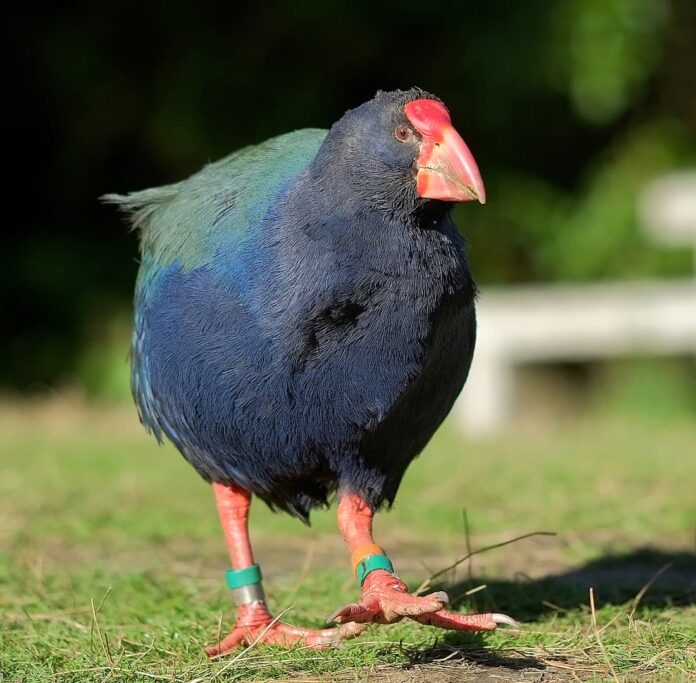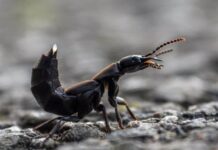Takahē has a very prehistoric appearance, and there are so many fascinating things about this flightless bird. These gorgeous birds are actually very rare, and they have always been facing extinction. In fact, one of the two species is already extinct, leaving just the South Island Takahē now. Breeding just once a year and laying just one to two eggs at most are among the main reasons for their small population. Let’s learn a thing or two about takahē today, this could be your next favorite bird.
1Appearance
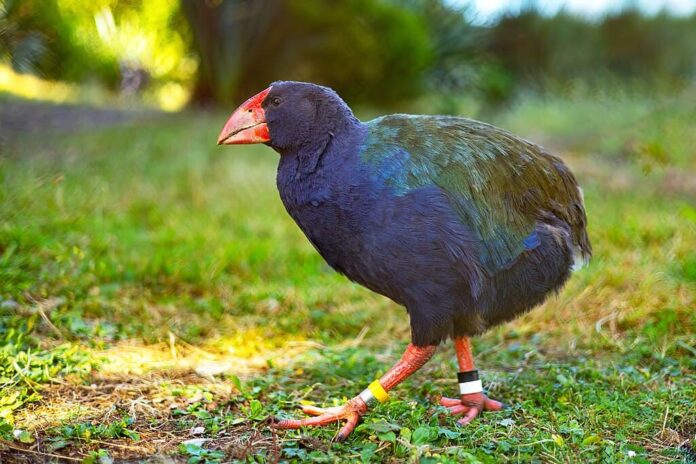
Takahē is a stocky bird that stands about 50 centimeters tall on average, with an overall length of around 63 centimeters. As a matter of fact, they are also the largest living railbird in the world as well. Looks like a beautiful canvas, a takahē has dark blue or navy blue silky and iridescent plumage, head, neck, and underside. Along with that, its back and inner wings are green and teal, while the tail is olive-green. Those wings are only for display during courtship or as a show of aggression; they cannot fly. And by the look of those red beaks, you should probably already be able to tell that they can deliver powerful bites. It has short and strong red legs that are strong, along with large feet and long toes.
2Behavior
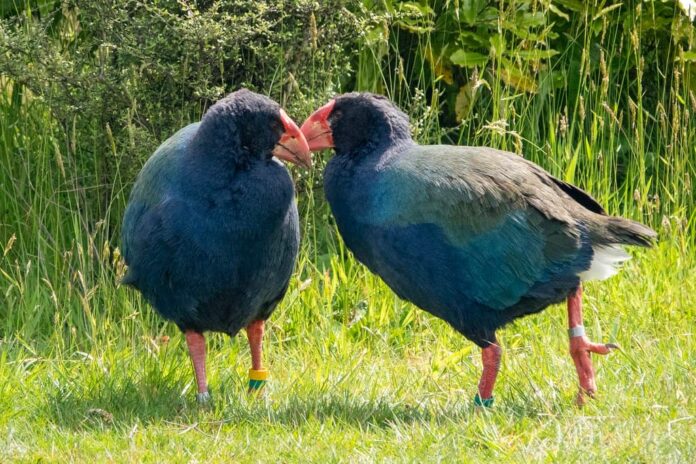
This large flightless bird is monogamous, and pairs remain together from 12 years to their whole lives. During the breeding season, which is between October and December, they come together to pair. The couple builds a bulky nest under bushes and scrub, and the female lays one to three eggs. Both the male and female take turns incubating the eggs for a month before the eggs hatch. Chicks stay in the nest for about a week, and then they climb out and follow their parents as they become stronger. Juveniles can actually breed in their first year, but they often remain with their parents for up to two years. Being territorial, takahē defend and guard their breeding territories very fiercely.
3Feeding & Habitats
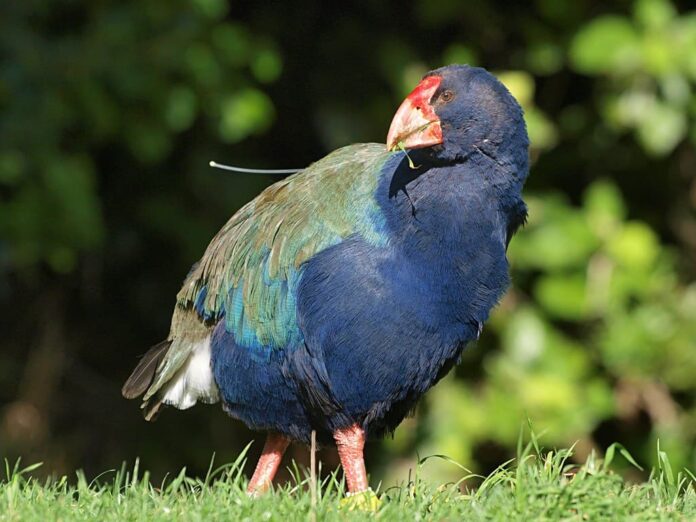
Takahē live in alpine grassland habitats where they feed on grass, insects, and shoots. Other common food options are the starchy leaf bases of tussock and sedge species as well as tussock seeds when available. During winter, when the snow cover is heavy, they will move to the forest and feed mainly on underground rhizomes of the summer green fern. Their sharp beaks serve the purpose as a perfect vegetation cutter and stripper, making feeding easy and simple.
It is thought that they were extinct in 1898, but they were rediscovered in an isolated valley in 1948. They were so close to extinction due to habitat loss, the introduction of predators, and overhunting. Even worse, in 2007, there was a stoat plague that took half of the takahē population in the Murchison Mountains. Their population is so small that there are only around 500 individuals at the moment. The measures that have been taken to protect them are: controlling deer, establishing other populations on islands, and protecting them from predators.
Related Post: Kagu Facts

